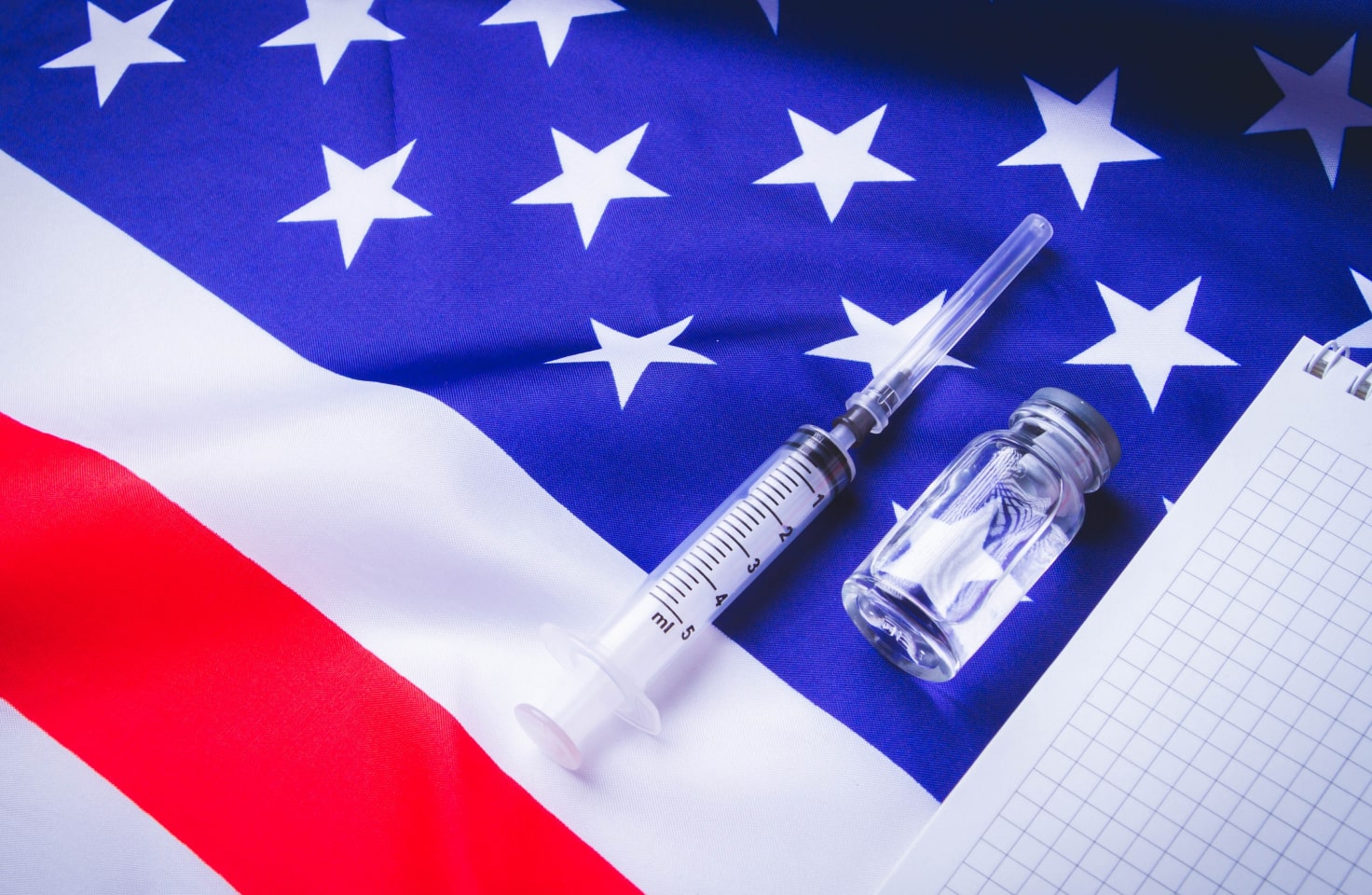T1D Guide
T1D Strong News
Personal Stories
Resources
T1D Misdiagnosis
T1D Early Detection
Research/Clinical Trials
Type 1 Diabetes Testing
Diabetes mellitus—a chronic disease that occurs when the body can’t produce enough insulin to support the cells for energy—has many associated types and tests. With more than 133 million Americans living with diabetes and more cases escalating every day, it’s essential to differentiate between the various forms, assessments, and treatment plans for each.

Receiving a diabetes diagnosis is life-altering, but it’s not the worst news you might hear. Though it’s a serious and complicated illness, it’s a manageable one where most individuals can thrive and live long, healthy lives.
Also, with enhanced diabetes screening and far-reaching research studies, diabetes testing has saved many lives.
First, if you suspect you may have diabetes, it’s vital to determine the correct form. With over a dozen different diabetes types, the four most common are – type 1, type 2, type 1.5 or latent autoimmune diabetes (LADA) and gestational diabetes.
Why Test for Type 1 Diabetes?
Several factors may motivate you to test for the autoimmune condition type 1 diabetes (T1D). The most common reason is that you’re experiencing flu-like symptoms similar to the following:
Common Diabetes Symptoms
- Extreme Thirst
- Extreme Hunger
- Unexplained Weight Loss
- Increased Urination
- Lethargy
- Blurred Vision
- Fruity breath or urine
- Dry skin
Family History/Genes
Another reason you may want to test for type 1 diabetes is if you have family members with the chronic condition. The American Diabetes Association (ADA) cites individuals with a first-degree T1D relative are 15 times more likely to develop the disease.
Why Screening Matters
New T1D therapies are in the pipeline to delay the onset of type 1 diabetes, and in some cases, for up to two years. Teplizumab (Tzield) was approved by the US Food and Drug Administration in 2022, and the blood pressure drug verapamil has been shown to keep the pancreas functioning in children with newly diagnosed T1D.
If you have family members with type 1 or type 2, you may be at a higher risk for developing the disease.
Interesting Fact: TrialNet is a free, research-based program for T1D families. The screening can be done in person or through an at-home kit.

Testing for Type 1 Diabetes
As there are many diabetes screening tests to determine whether or not you have diabetes, you may still wonder how you know if you have type 1 or type 2 diabetes. Given the close relationship between the two serious conditions, one might ask how a healthcare professional differentiates between type 1 and type 2.
The answer is in the autoantibodies.
Autoantibodies in Type 1 Diabetes
According to the National Institutes of Health, autoantibodies are proteins in your immune system that mistakenly attack healthy tissues and cells. Your health care provider can check for autoantibodies with a blood sample.
There are four different autoantibody markers for type 1 diabetes:
- Islet cell antibodies (ICA, against cytoplasmic proteins in the beta cell)
- Antibodies to glutamic acid decarboxylase (GAD-65)
- Insulin autoantibodies (IAA)
- IA-2A, to protein tyrosine phosphatase
Are there different type 1 and type 2 lab tests? Is there a quick test for type 1 diabetes?
The answer is yes. Testing for one single autoantibody for T1D puts the individual at a low risk of developing T1D; however, these individuals may progress to higher risk categories over time.
People with two or more autoantibodies have a nearly 100% risk of developing T1D over 20 years.
Some tests (fasting glucose, oral glucose tolerance, A1c, C-peptide tests and insulin assay tests) can confirm initial positive autoantibodies and rule out a T1D diagnosis.
Autoantibody Test
An autoantibody test is a type 1 diabetes blood test for autoantibodies. These autoantibodies are found in the blood at the beginning of type 1 diabetes. Two or more autoantibodies indicate that the individual is in the early stages of type 1 diabetes.
The diabetes autoantibody panel is one of many tests to check for type 1 diabetes. Before the panel, your healthcare provider will order the random or fasting glucose test.
Islet Autoantibody Test
An islet autoantibody test detects the proteins in the blood. These markers can be seen long before the beta cells are destroyed.

GAD or GADA Antibody Test
The GAD blood test measures the autoantibodies that target glutamic acid decarboxylase (GAD). The antibodies provide evidence of an autoimmune disorder in the pancreas. The test typically helps determine if an individual has LADA or gestational diabetes.
C-peptide Test
Researches have developed a new way to test type 1 diabetes, called the C-peptide test. This test measures the level of C-peptide (a substance produced by the pancreas when it makes insulin) in the blood or urine. A healthy pancreas produces equal amounts of insulin and C-peptide. In addition to identifying whether someone has type 1 or 2 diabetes, this test is also used to see how well diabetes medication is working.
Insulin Assay Test
An insulin assay test is usually given alongside a C-peptide test to measure the amount of insulin in the blood.
Genetic Testing
Some researchers and companies are developing new tests to distinguish between type 1 and type 2 diabetes. This testing should be more readily available and hopefully can be an accessible, cost-effective, accurate tool to support the right diagnosis.
Misdiagnosis of Types 1 and 2 Diabetes
The two different types of diabetes, type 1 and 2, have similar symptoms but are vastly diverse diseases with different treatments. As the symptoms overlap, misdiagnosed cases keep rising. It’s estimated that up to 40% of adults 30 years and older who actually have type 1 diabetes have been misdiagnosed with type 2 diabetes.

Type 1 Diabetes
Type 1 diabetes is an autoimmune condition where the immune system attacks the insulin-producing beta cells in the pancreas. Without insulin to unlock the cell doors for energy, blood sugar builds up in the bloodstream.
What was once called juvenile diabetes because it was commonly diagnosed in children and adolescents, is now more prevalent in young adults and even individuals into their 70s and 80s.
Type 2 Diabetes
Type 2 diabetes, initially called adult diabetes, occurs when the body doesn’t respond to insulin, the hormone that allows blood sugar to enter cells to use as energy. The pancreas produces more insulin, which gets trapped in the blood, causing blood glucose levels to rise.
Diabetes Risk Test
If you’re wondering if you have type 2 diabetes, the American Diabetes Association (ADA) has a quick 60-second Type 2 Diabetes Risk Test to determine if you may be at risk.

Diabetes Treatments
It’s important to note that each type of diabetes requires an individualized treatment plan. No matter which type of diabetes you have, you’ll eventually have to manage your blood glucose control and keep glucose levels in good range. With some types like LADA, the symptoms don’t appear until much later as the individual goes through a ‘honeymoon phase.’
Type 2 diabetes treatment plans differ from those for type 1, as type 2 can sometimes be managed with specific lifestyle changes, such as eating a healthy diet and increasing physical activity and oral medication or injectables like GLP-1 drugs. Strict blood pressure and high and low blood sugar level monitoring are advised; additional insulin is sometimes required.
Type 1 diabetes requires insulin injections or an insulin pump with additional healthy lifestyle management and diligent blood glucose (sugar) testing.
Ways to Test Blood Glucose
A simple blood glucose meter (BGM) is commonly used to test blood sugar levels with a drop of blood squeezed onto a strip. Another way to watch blood sugar levels throughout the day and night is with digital devices like a continuous glucose monitor (CGM). They measure blood sugar levels in the fluid beneath the skin and send data to a phone app or insulin pump every one to 15 minutes.

The dangers of low and high blood sugar levels can be severe.
Hypoglycemia (Low Blood Glucose)
When your blood sugar levels get too low due to too much insulin in your system, you risk hypoglycemia, which can quickly become a medical emergency. A low blood sugar reading of 54 mg/dL or lower can cause fainting, seizures, brain swelling and even death.
Hyperglycemia (High Blood Glucose)
The leading complication of high blood sugar (when the body doesn’t have enough insulin to unlock the cell doors to receive energy) is diabetic ketoacidosis (DKA). Similar to diabetes symptoms, high blood glucose or the more serious DKA signs include:
- Fast, labored breathing
- Dry skin and mouth
- Fruity-smelling breath
- Muscle stiffness or aches
- Being very tired
- Nausea and vomiting
- Headache
Ketones Testing
A simple way to test for DKA is to test the ketones in your blood through a urine test or blood ketone test. Sometimes, you can have ketones, even when your blood sugar level is in the normal range. Ketones have a dangerous effect, as they can upset the chemical balance of your blood and poison the body, leading to a serious medical emergency.
This is why continuous glucose monitoring and ketone testing are important when you’re ill. When high glucose levels remain escalated for too long, they can result in serious health problems like diabetic retinopathy (eye disease), kidney damage, nerve damage (neuropathy), cardiovascular disease, as well as feet and joint problems.
Other Diabetes Tests for the Different Types
Blood Sugar Tests or Blood Glucose Tests
Even more importantly, a simple blood sugar test, also known as a blood glucose test or a random blood sugar test, measures blood sugar (glucose) levels or the amount of glucose in your blood. Additionally, random blood sugar (RBS) tests, or ‘casual’ blood glucose tests, assess the amount of glucose in your blood at any time, regardless of when you last ingested food or drink.
A normal RBS is typically around 125 mg/dL or lower, but it can vary depending on when you last ate. A result of 200 mg/dL or higher may indicate diabetes or pre-diabetes.
Glucose Tolerance Test
An oral glucose tolerance test (OGTT) is a lab test that measures how well the body processes sugar. It must be taken on an empty stomach, and a blood sample is drawn to determine the baseline. The individual then drinks a large glass of concentrated sugar solution.
This test might be administered if the individual is overweight, has high triglycerides or high blood pressure, has a close family member with diabetes or had gestational diabetes during a past pregnancy.
Plasma Glucose Test
A plasma glucose test measures the amount of glucose in a person’s blood. There are two types: a capillary test, where a healthcare professional takes a drop of blood from the individual’s finger, and a venous test, where the blood is taken from a vein by a phlebotomist.

Glycated HbA1c Test or A1c Test
The Glycated Hemoglobin A1c test (HbA1c test), or simply the A1c test, is a three-month average blood sugar test that measures blood sugar levels over time.
An A1c result of 6.5% or higher on two separate occasions means you have diabetes.
Diabetes Management
Your diabetes care must receive the utmost attention. The disease is manageable, but you’ll sometimes need assistance from trained health care professionals who have your best interest in mind. A diabetes care team monitors your blood glucose level and checks for secondary illnesses like thyroid, Hashimoto, and celiac disease.

Diabetes specialists can assist with purchasing the right CGM or insulin pump and help with nutrition and dietary needs. Healthy lifestyle changes like increased exercise, better sleep, and an improved diet benefit all types of diabetes. Also, watching for high blood pressure, having routine physicals and blood work, and health screenings are beneficial.
A Promising Future
With so many blood tests, it’s unfortunate that many individuals are still misdiagnosed with the disease. Despite having no cure for type 1 diabetes, there are promising discoveries on the horizon, such as the artificial pancreas, beta cell regeneration, cell encapsulation, and islet cell transplantation, and though pancreas transplant surgery is performed in rare circumstances, the most exciting research is turbo-boosting cell therapies, where healthy insulin-producing beta cells are placed back into the bodies of people with T1D.
Early diagnosed is vital to your well being. Creating a diabetes management plan as soon as possible can help you stay active, strong and healthy.


.webp)





.webp)
.jpg)
.jpeg)
.jpg)

.jpg)
.jpg)
.jpg)
.jpg)

.jpg)


.jpg)
.jpg)
.jpg)

.jpg)
.jpg)


.jpg)

.jpg)
.jpg)
.jpg)
.jpg)
.jpg)



.jpg)
.jpg)
.jpg)


.jpg)
.jpg)

























.jpg)



.jpg)



.jpg)












.webp)
















.webp)











.webp)